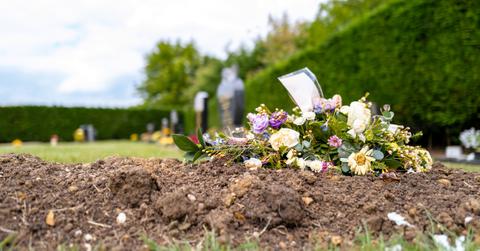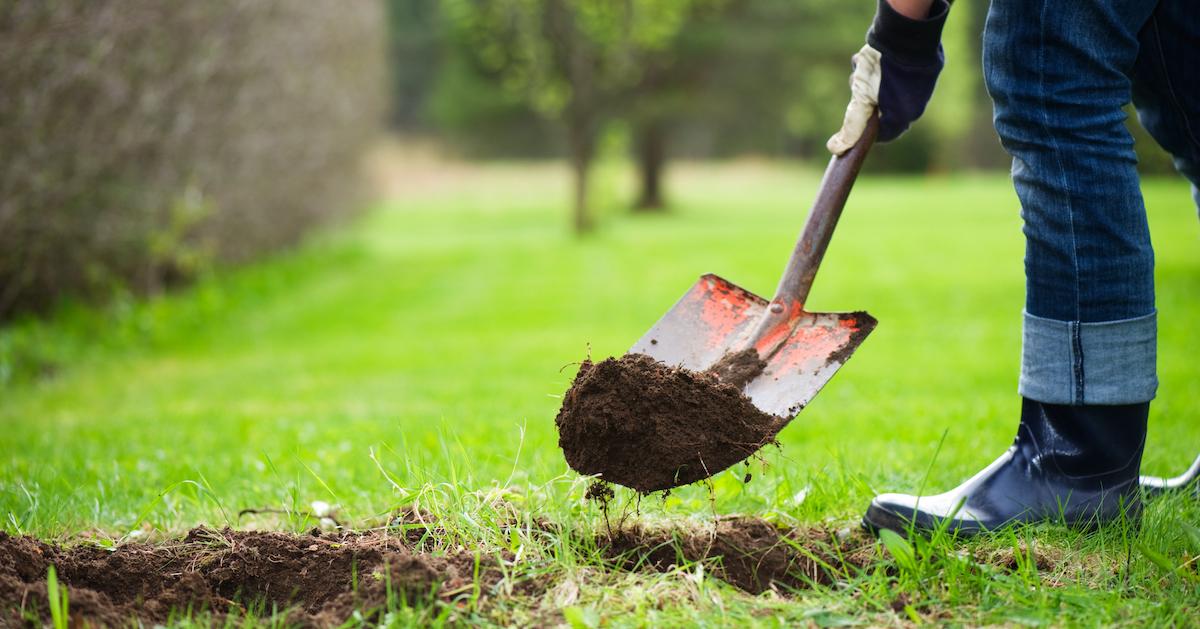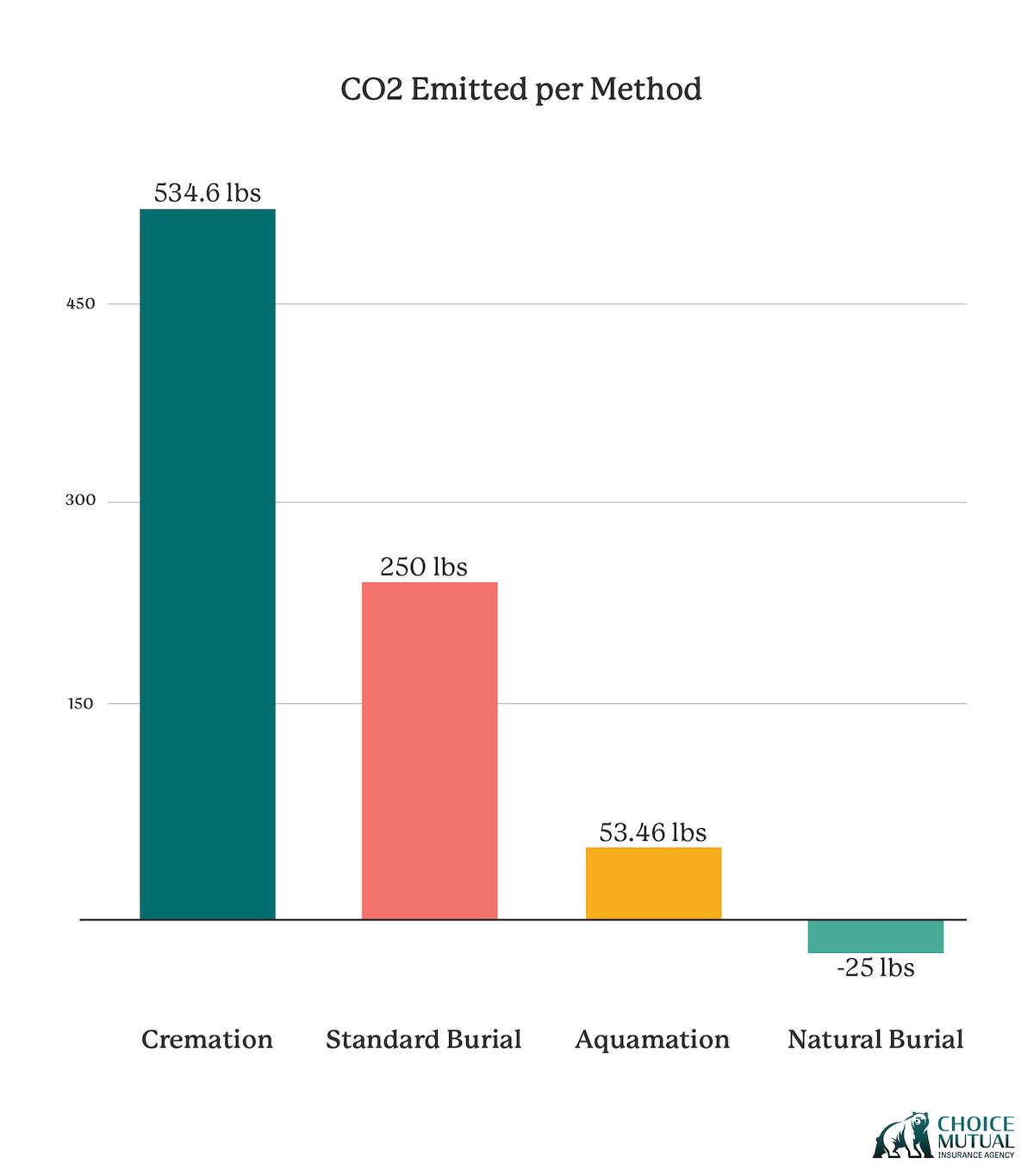These Are the Greenest States to Die In, According to a New Report
Published Dec. 27 2022, 2:34 p.m. ET

As more and more humans have become concerned with living sustainably, a growing population has also become concerned with dying sustainably. Fortunately, there are a number of companies across the U.S. that offer eco-friendly burial methods, from human composting to water cremation. That said, these practices are not available in every state.
So, a new report analyzes the greenest states to die in — you know, in case you feel like moving across the country to spend your final days. But what states even allow green burials?

A columbarium wall near crematorium.
What states allow green burials? A new report analyzed which states are the greenest to die in.
For the report, Choice Mutual Insurance Agency, a final expense insurance marketplace, looked at a few factors when determining which of the 51 U.S. states and districts (including Washington, D.C.) had the most eco-friendly death care options.
One factor the report looked at how was how accessible green burials are in each state. The three eco-friendly burial options that the report analyzed were:
- Aquamation (aka water cremation and alkaline hydrolysis), which is when a body is cremated using water and natural alkali salts instead of fire, resulting in white, brittle bone ash. This process is legal in about 20 states, as listed by US Funerals Online.
- Body composting (aka human composting, natural organic reduction, and terramation), in which a body is placed in a vessel and composted into soil. This process is legal in five states: California, Colorado, Oregon, Vermont, and Washington.
- Natural burial, which is when a body is not embalmed, and is placed directly into the ground wrapped in a biodegradable casket to naturally decompose. This is legal in every state, though not every state has facilities that offer natural burials.

The agency also looked at the per capita emissions of current burial decisions in the U.S. It found that more than 90 percent of burials are either traditional cremations or standard burials — meaning less than 10 percent of people are opting for sustainable burials.
According to Choice Mutual, the average cremation emits 534.6 pounds of CO2, a standard burial emits 250 pounds of CO2, aquamation emits 53.4 pounds of CO2, and a natural burial does not emit any CO2, instead sequestering 25 pounds of it. Human composting was not included in the graph, as there was not enough data on its emissions.
It's important to note that the study only looked at CO2 emissions for this report, and not other pollutants or hazards involved in each burial process.

What is the greenest state to die in? Utah came out on top.
Choice Mutual combined the above data to determine which states are the greenest to die in, based on the current emissions impacts of people’s burial decisions in each state, and how accessible green burial services are in each state.
Overall, Choice Mutual determined that the greenest state to die in is Utah, as it had an emissions impact of 1, and access to six different sustainable burial services. Both water cremation and natural burials are legal in Utah, though body composting is not.
Here's the full list of how all 51 states and Washington, D.C. ranked, from the most green state to die in to the least.
| Overall Rank | State | Emissions Impact | Sustainable Burial Services Access |
|---|---|---|---|
| 1 | Utah | 1 | 6 |
| 2 | Colorado | 9 | 3 |
| 3 | Washington | 13 | 4 |
| 4 | Vermont | 15 | 1 |
| 5 | Oregon | 29 | 2 |
| 6 | California | 5 | 15 |
| 7 | Maryland | 6 | 11 |
| 8 | Georgia | 7 | 18 |
| 9 | Hawaii | 10 | 12 |
| 10 | Idaho | 11 | 17 |
| 11 | North Carolina | 16 | 9 |
| 12 | Alaska | 2 | 45 |
| 13 | Minnesota | 18 | 7 |
| 14 | Illinois | 19 | 14 |
| 15 | Virginia | 3 | 38 |
| 16 | Texas | 4 | 43 |
| 17 | Alabama | 25 | 13 |
| 18 | Kansas | 30 | 10 |
| 19 | Connecticut | 34 | 8 |
| 20 | Wyoming | 37 | 20 |
| 21 | Massachusetts | 8 | 21 |
| 22 | Florida | 45 | 19 |
| 23 | New York | 12 | 30 |
| 24 | Nevada | 47 | 16 |
| 25 | New Jersey | 14 | 34 |
| 26 | Nebraska | 17 | 45 |
| 27 | South Dakota | 20 | 27 |
| 28 | North Dakota | 21 | 45 |
| 29 | Kentucky | 22 | 45 |
| 30 | Louisiana | 23 | 44 |
| 31 | Washington DC | 24 | 28 |
| 32 | Mississippi | 26 | 45 |
| 33 | Maine | 51 | 5 |
| 34 | Rhode Island | 27 | 22 |
| 35 | Delaware | 28 | 45 |
| 36 | South Carolina | 31 | 31 |
| 37 | Indiana | 32 | 40 |
| 38 | Arizona | 33 | 39 |
| 39 | New Mexico | 35 | 37 |
| 40 | Wisconsin | 36 | 33 |
| 41 | Oklahoma | 38 | 36 |
| 42 | Iowa | 39 | 41 |
| 43 | Tennessee | 41 | 35 |
| 44 | Arkansas | 42 | 32 |
| 45 | Ohio | 43 | 24 |
| 46 | Pennsylvania | 44 | 25 |
| 47 | Missouri | 46 | 29 |
| 48 | Michigan | 48 | 23 |
| 49 | Montana | 49 | 26 |
| 50 | West Virginia | 50 | 42 |
| 51 | New Hampshire | 40 | 51 |
Interestingly, it appears as though state populations or population densities may have been taken into account in this report. For instance, Vermont (which has the second lowest population of any U.S. state) was ranked as the fourth most green state to die in, though the state only has one sustainable burial service.
But even if your state ranked low on the list, the good news is, there are green burial methods available in every single U.S. state, and you should be able to access a sustainable burial if that is how you would like your body to be laid to rest.